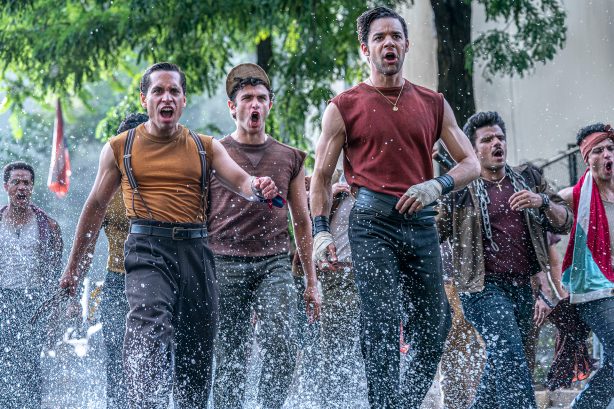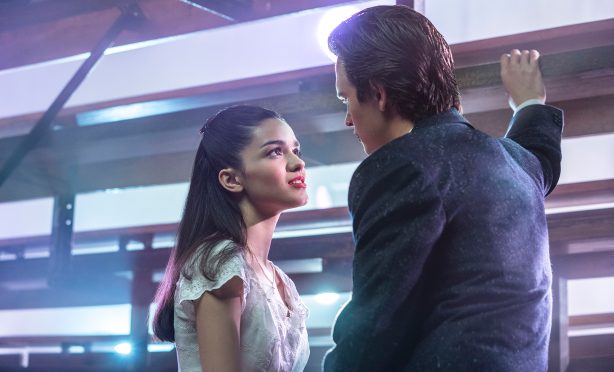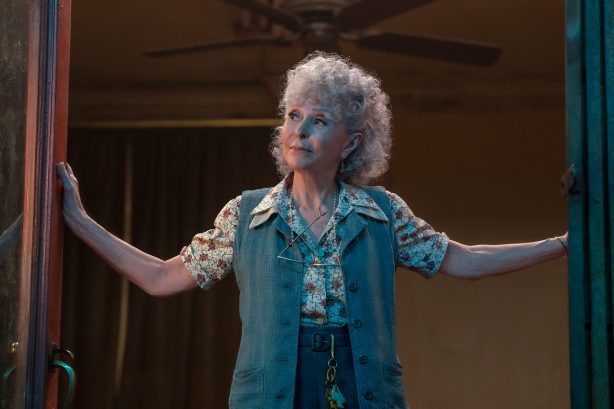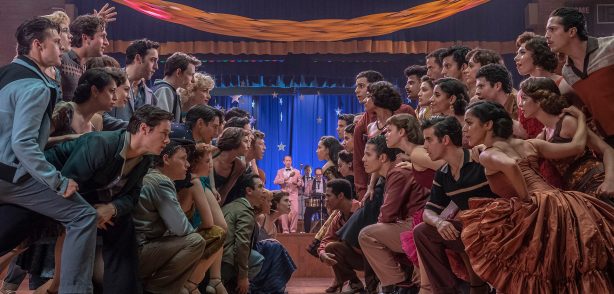Directed by Academy Award® winner Steven Spielberg, from a screenplay by Tony Award® winner Tony Kushner, 20th Century Studios’ West Side Story tells the classic tale of fierce rivalries and young love in 1957 New York City. Since it debuted on Broadway over 60 years ago, the musical has often been revived both professionally and in amateur productions throughout the world, and was first adapted for the screen in 1961. The latest adaptation, opening today in U.S. theaters, offers a fresh, original, unique perspective on the material.
“It’s very intimidating to take a masterpiece and make it through different eyes and different sensibilities without compromising the integrity of what is generally considered the greatest music ever written for the theater,” says Spielberg. “But I believe that great stories should be told over and over again, in part to reflect different perspectives and moments in time into the work.”
Adapted for the screen from the original Broadway show, West Side Story was created by director and choreographer Jerome Robbins, composer Leonard Bernstein, lyricist Stephen Sondheim and playwright Arthur Laurents. “Those four guys created a masterwork for the theater,” Spielberg says. “It redefined Broadway musicals, it was the first of its kind, utterly original, and no one can capture that kind of lightning-in-a-bottle twice. We understood that, but while we worked to honor this masterwork, to live up to its demands, we also hoped to try to find our way into the energy it took to make something that new, that fresh. West Side Story is both incredibly assured, and also incredibly young. And also, it’s deeply true—about love and life and death. I wanted everyone on the creative team to feel part of bringing the profound and beautiful truths of this story to contemporary audiences.”

In retelling this classic story, Spielberg was keen to put his own stamp on the material. “We needed to discover our voice so that [the new film] would be the same but distinctly different. We didn’t want to fix what wasn’t broken, but we did want to justify why we were telling the story again,” he says. “Part of that is the cast. On stage, the actors have largely not been Hispanic, and in the 1961 movie they’re in their thirties, and many who were portraying the Puerto Ricans are white. I wanted to cast it authentically, to ensure that the actors playing the Shark boys and girls were one hundred percent Latinx, and young.”
West Side Story casting lead Cindy Tolan recalls, “Steven said to me, the only way we’re going to make this film is if we can cast it appropriately, and he and [producer] Kristie [Macosko Krieger] gave me everything I needed to do it properly. I also had an incredible group backing me up, especially my associate Nicholas Petrovich, who worked very closely with me.” Auditions got underway in January 2018, a full year before filming began. “I felt my mandate was pretty clear, that all of the Sharks, María, Anita, Bernardo and Chino—everyone needed to be Latinx,” Tolan says. “And they also had to be triple threats, meaning they needed to be able to sing, dance and act. A quadruple threat, really, because there was a fourth dimension: the camera had to love them.”

The West Side Story cast includes Ansel Elgort as Tony, Ariana DeBose as Anita, David Alvarez as Bernardo, Mike Faist as Riff, Brian d’Arcy James as Officer Krupke, Corey Stoll as Lieutenant Schrank and Josh Andrés Rivera as Chino, with Rita Moreno as Valentina and introducing Rachel Zegler as María. Moreno also serves as one of the executive producers.
First on the page and then on the screen, the characters became more nuanced and real. “What we wanted to do was basically reinvent, explore the characters much more deeply, give them reasons for being who they are,” Spielberg says. “For example, when we meet Tony, he’s just gotten out of prison. It has changed him, right from the start of our film.”
Spielberg and Kushner reconceived one character altogether—the kindly druggist Doc—transforming him into his widow, a nurturing woman who befriends young Tony. From the start, the role was intended for Moreno, who won an Academy Award® for her performance as Anita in the 1961 film. “Valentina’s backstory is 25 pages long,” Kushner says. “It’s like a little novel, starting with her early life in Puerto Rico, and it includes how Tony came to live in the basement of her drugstore. It spans the first half of the twentieth century. While I was writing it, I fantasized that I was watching an epic miniseries starring Rita Moreno.”

During the pre-production period, Spielberg and Macosko Krieger continued to consult with the estates of the original creators and welcomed their input as part of production. For example, in addition to authentic casting, Spielberg wanted to better define the context and landscape in which the rival gangs endured. “The same wrecking ball was obliterating the turf of each faction, entire neighborhoods [were] being torn down, populations [were] being displaced,” Spielberg says. “All of these kids—Jets and Sharks—were subjected to that upheaval. These kids are fighting for territory that’s disappearing before their eyes.”
This was an issue the filmmakers would emphasize in their new version, even if, as Spielberg notes, it only increased the enmity between the gangs. Kushner dove into the project with immense enthusiasm, conducting research into the background of the story, especially the destruction of an entire section of the Upper West Side. Faithful to Laurents’ original libretto, and with the blessings of David Saint (the executor of Laurents’ estate), the Leonard Bernstein estate, the Robbins estate and Stephen Sondheim, Kushner dug deep into not only the history of the destruction of Lincoln Square and San Juan Hill but also how it would affect the characters.

In his retelling, Kushner portrays each character in the story as multidimensional with individual backstories that motivate their actions. “The story is both big and political, yet at its heart it’s as private and personal as can be, two young people who fall fiercely in love; but the love that blossoms between them is murdered by the big political world surrounding them,” says Kushner. “The story is a warning: racism and nativism and poverty are democracy’s antitheses, and if not resisted and rejected they will atomize the bonds that hold us together as a society. Love, as they say, is the answer—love can transform the world, it can transform malevolent reality, but love doesn’t conquer all, or at least not all threats in the immediate moment. In a context of hatred, love is in danger. And that is tragic. That’s the tragedy of West Side Story.”
“This is Romeo and Juliet, but it’s also a very relevant allegory for what’s happening along our borders and for the systems in this country that reject anyone who isn’t white,” Spielberg adds. “That’s a big part of our story. The characters say and do things in our West Side Story they didn’t say or do onstage or in the 1961 film, and much of that difference came from our determination to explore the story, its historical context, and what the young people of Lincoln Square and San Juan Hill were really like—the Sharks and the Jets. The Puerto Rican community that’s involved in West Side Story existed at that time mainly between West 64th and West 72nd Streets. There’s a rich and important history of that community which we wanted to incorporate in our version of the musical.”